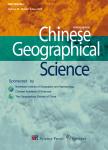版权所有:内蒙古大学图书馆 技术提供:维普资讯• 智图
内蒙古自治区呼和浩特市赛罕区大学西街235号 邮编: 010021

作者机构:Resources and Environment CollegeAnhui Agricultural UniversityHefei 230036China Key Laboratory of Ecosystem Network Observation and ModelingInstitute of Geographic Sciences and Natural Resources ResearchChinese Academy of SciencesBeijing 100101China College of Resources and EnvironmentUniversity of Chinese Academy of SciencesBeijing 100049China Institute of Grassland ScienceNortheast Normal Universityand Key Laboratory of Vegetation EcologyMinistry of EducationChangchun 130024China
出 版 物:《Chinese Geographical Science》 (中国地理科学(英文版))
年 卷 期:2019年第29卷第6期
页 面:1001-1010页
核心收录:
学科分类:07[理学]
基 金:Under the auspices of National Key R&D Program of China(No.2016YFA0600104,2016YFC0500102,2017YFD0200604) National Natural Science Foundation of China(No.31770655,41671045,31772235)
主 题:soil respiration soil microbial biomass carbon precipitation temperature Inner Mongolian grassland
摘 要:Microbial metabolic quotient(MMQ) is the rate of soil microbial respiration per unit of microbial biomass, and represents the capacity of soil microbes to utilize soil organic *** the regional variation and determinants of MMQ can help predict the responses of soil respiration rate to global climate ***, we measured and analyzed MMQ-related data(e.g., soil basic respiration rate at 20℃ and soil microbial biomass) from 17 grassland sites, which located in meadow steppe, typical steppe, and desert steppe along a 1000-km transect across the Inner Mongolian grasslands, *** showed that MMQ varied significantly among the different grassland types(P typical meadow) and decreased from southwest to northeast(r =–0.81) with increasing latitude(r = – 0.50), and with increasing mean annual precipitation(r = –0.69).Precipitation accounted for 56% of the total variation in MMQ, whereas temperature accounted for 26%.MMQ was negatively correlated with precipitation across the Inner Mongolian ***, climate change, especially in regard to precipitation, may influence soil microbial respiration and soil carbon dynamics through altering *** results highlighted the importance of spatial patterns in MMQ for accurately evaluating the responses of soil respiration to climate change at regional and global scales.